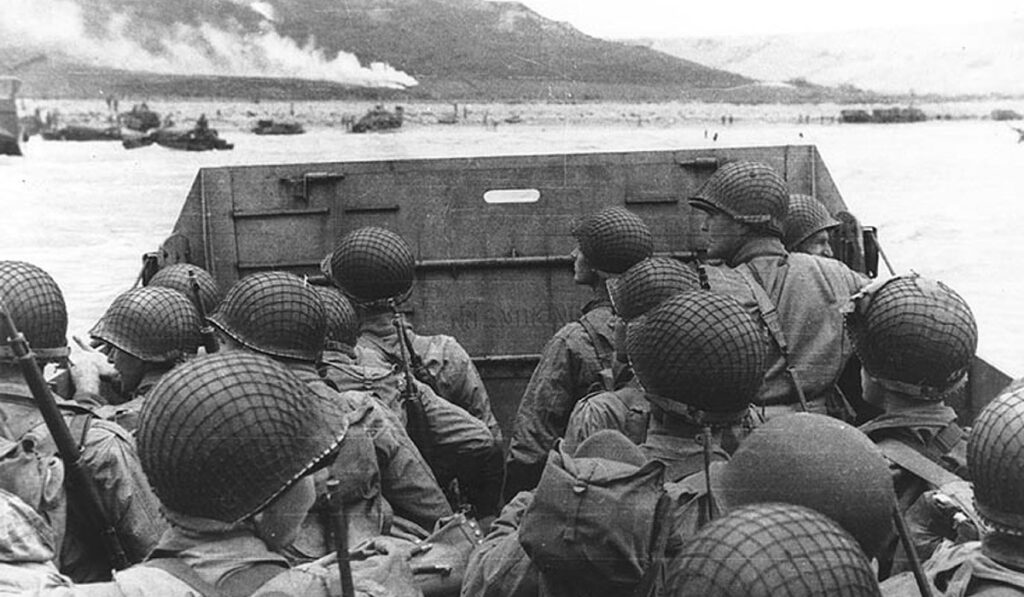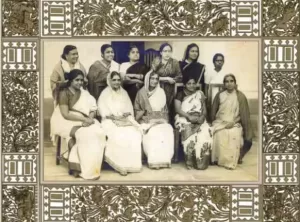This Thursday sees the 80th anniversary of D-Day, the US and UK invasion of Normandy in Nazi occupied France. For both the US and the UK the anniversary will be celebrated as heralding their victory in Europe in the Second World War.
That’s because they can portray it as a ‘good war,’ in which they triumphed over the supreme evil of Nazism. Neither power had been able to portray subsequent conflicts in such a way – whether in Korea, Vietnam or Iraq.
But that has not stopped them drawing on the legacy of the Second World War whenever it suits their imperial interests. Thus, a range of opponents they have wished to topple, from Egypt’s Colonel Gamal Abdul Nasser in 1956 after he nationalised the Suez Canal, through to Iraq’s Saddam Hussein, to Vladimir Putin today, as new ‘Hitlers.’
Opponents of the wars launched to overthrow them were accused of being ‘appeasers’ – a reference to the pre-war governments of Britain and France who hoped to buy off Hitler by feeding him territory in Central and Eastern Europe. Winston Churchill’s war time rhetoric is continually reheated and repeated.
For the British ruling class the Second World War is important in two ways.
First, it sees the war as its ‘finest hour,’ to quote Churchill in 1940, when Britain stood ‘alone,’ after the German occupation of France, against Nazism. In fact, it was not alone, being armed by the US, while it could rely on the armed forces of the Dominions and India, while in late 1940 the Greeks defeated an Italian invasion of their country, forcing Hitler to intervene to bail out Mussolini.
The Second World War was the last time Britain acted as truly a great power. And the British elite love to celebrate that. In addition, it seems to atone for the horrors of slavery and Empire.
It was important in a second way: the idea of a People’s War, in which we were all in it together, became very important ideologically. For the British ruling class, the Second World War became vital to a change they grasped had to be made. Prior to 1945 the emphasis for the ruling class was on an imperial identity. As the Empire began to shrink it became vital to create a British national identity.
The war, and the idea that Britain had stood ‘alone’ in 1940 against the Third Reich was central to that. It was celebrated in a host of films. The war comics I read in the 1960s depicted a war fought by plucky British Tommies against evil Germans and Japanese, with a little help from the Yanks and none from the Ivans.
The 1945-1951 Labour government of Clement Attlee laid the basis for a social democratic consensus which lasted until Margaret Thatcher, whereby the NHS and the welfare state became key elements in the creation of a popular British identity.
In 1924 and 1938 Wembley had hosted Empire exhibitions, attended by huge crowds. In 1951 London’s South Bank hosted the Festival of Britain. That change was more than symbolic.
So, let’s turn to D-Day. From 1941 until the Third Reich’s fall in April 1945 the vast majority of German forces were fighting the Russians on the Eastern Front. Throughout 1942 and 1943 the Russian dictator, Josef Stalin, had pleaded with the Western Allies to open a second front by invading France to relieve the Red Army. Those pleas were ignored.
By the spring of 1944 the Red Army had won at Stalingrad and at Kursk, the biggest single battle of the war. It had broken the German Army, the Wehrmacht. Stalin told his generals, ‘our own forces are sufficient to complete the rout of Nazi Germany.’[1]
Turning back to the US/UK alliance, Churchill described the United States and the United Kingdom as ‘a noble brotherhood of arms.’ The truth was somewhat different. After America’s entry into the war Churchill knew Britain could not hope to dominate a land war in northern Europe. Gabriel Kolko writes, ‘The British objective was to employ their very limited resources carefully in a global struggle at precisely those points where they might have the maximum political effect.’ All Britain could hope to do was to reclaim its dominance in the Mediterranean.[2]
In 1942 Churchill convinced President Roosevelt that US troops crossing the Atlantic should land in Morocco and Algeria to help the British clear the Germans and Italians out of North Africa – very much a secondary front for Berlin. Once that was achieved he won the argument for invading Sicily and mainland Italy, rather than building up for an assault across the English Channel.
Britain constantly manoeuvred to oppose a landing in France, putting forward all sorts of alternative schemes – including an invasion of neutral Portugal. Even after the US insisted on the Operation Overlord, the invasion of Normandy, going ahead – Churchill could ask in February 1944, ‘Why are we trying to do this?’ On D-Day the British provided half the troops (including Canadians and Poles). This was the maximum force it could mobilise. From then until the end of the war British troop levels declined while America’s mushroomed until they had five times as many troops fighting the Germans.[3]
By 1944 Britain was dependent on the US for its tanks, cargo vessels, landing craft, and much more plus raw materials, steel and food. It was deeply in debt to the US and Churchill and the British elite knew the US wanted access to its imperial markets, particular India, and that Canada, Australia and New Zealand had shifted over into the American camp.
Aware that any delay in invading Western Europe would mean the Red Army conquering Germany Roosevelt and his commanders insisted on the Allied landing in Normandy. The Americans were looking to dominating Western Europe and saw Germany as key to that.
On 6 June the Allies got ashore in Normandy and established a bridgehead. The Germans failed to launch an immediate attack, their best chance of defeating the invasion. The Anglo-American invasion forces had overwhelming advantages; control of the sea and air, and a 5:1 superiority in tanks. They faced just 18 German divisions. Another 19 were kept in the Calais area because Hitler insisted the Normandy landing was a feint and the main attack would be there.
By 11 June the Allies had established a bridgehead 50 miles wide and 12 miles deep into which they poured 326,547 men, 54,000 vehicles and 104,000 tons of supplies. But the original plan had hinged on the British commander, Bernard Montgomery, taking the city of Caen in the early days of the invasion, and driving onto Paris. In fact, Caen did not fall until 8 August and the Allies faced two months fighting an attrition battle in this narrow bridgehead.
Unlike the Germans, the Allies never perfected co-operation between the armoured force, the infantry and air force, nor could they emulate German infiltration techniques. The British commanders lacked tactical flare and Montgomery relied on artillery barrages prior to any attack to try and minimise losses the British could not afford.
Desperate to break the deadlock Roosevelt and Churchill pleaded with Stalin to bring forward his planned summer offensive, Operation Bagration. He agreed. This was the decisive battle in the fight against the Third Reich. Not in Normandy, but thousands of kilometres to the east in Belorussia. In just 23 days, the Red Army advanced between 400km and 500km, an average of 20km a day. The German losses were 381,000 killed and 158,480 captured, far greater than the losses at Stalingrad.
Yet victory came at a price: 180,040 Soviet soldiers killed or missing, 590,848 sick or wounded, and 2,957 tanks and 822 aircraft lost. By the late summer the Red Army was outside Warsaw (looking on as the Polish resistance rose up, seeking unsuccessfully to liberate their capital), with the direct road to Berlin behind it, on the borders of the Third Reich in East Prussia and having cleared the Germans from the Balkans.
Finally, in Normandy the logjam was broken by the maverick and very right wing US general, George S. Patton, who on 1 August broke out southwards into Brittany and then turned east to the River Seine trapping German forces into a pocket around Falaise. In fact, many German troops broke out because the Allies failed to plug all the escape routes.
By September Paris had been liberated (largely by a resistance uprising), as had Brussels but the Allies were far from securing a crossing of the Rhine into Germany. At this stage the ultra conservative Montgomery came up with a madcap scheme whereby lightly armed British paratroops were dropped into the Dutch city of Arnhem to secure the bridge there – despite the Dutch resistance informing the British that an SS Panzer Corps had been stationed there.
The Paras were to hold out while Allied armour took another bridge to the south at Nijmegen and advance along a single road surrounded by flood plain on both sides. The plan anticipated that they would cover the 103 km (64 m) from their start to Arnhem in 48 hours.
Needless to say, it failed. The Allies only crossed into Germany in March 1945 by which time the Red Army was readying to take Berlin. The Red Army, still fighting the majority of German forces, did that and ended the war in Europe.
The Americans and British had to agree to partition Europe and Germany giving Stalin Eastern Europe, Eastern Germany and much of Berlin.
Victory in Europe, and then over Japan, meant Washington could turn to another key war aim, ending the British controlled trade bloc:
‘The United States could not afford, however, to compromise on the essential principle of breaking down the sterling bloc, for that was the key to the reconstruction of the world economy after the defeat of the Axis.’[4]
This would entail negotiations from the very first meetings between the two allies through to the Yalta and Potsdam summits and would result in the Bretton Woods agreement which established the primacy of the dollar, the GATT agreement which created a free trade zone for America and the International Monetary Fund as the world’s financial policeman – the international rules-based order.
D-Day was important but it was not the crucial episode in the defeat of the Third Reich. Today, we should recall that despite the rhetoric then and now, this was not a war for democracy. Both sides built dictatorships. Stalin in his satellite states, Britain and the US in Greece, with Britain restoring French and Dutch colonial rule in Indochina and Indonesia by force of arms.
Neither was it a war against fascism. Hitler and Mussolini were dead but General Francisco Franco, their loyal ally who had sent troops to fight in Russia, ruled Spain as a fascist dictatorship until his death in November 1975.
All of this is important in challenging the myths our ruling class deploy so well about the Second World War. But the biggest myth was that told to my parents, both of whom volunteered to fight, that they would never experience the wars, fascism, unemployment and poverty of their childhood years in the 1930s. They were promised universal health care, full employment and a welfare state from the cradle to the grave.
That promise was never properly fulfilled and then broken. Their children and grandchildren would pay the price – somethings never change!
Notes
[1] Chris Bambery, The Second World War: A Marxist History, Pluto Press, 2014, P132
[2] Gabriel Kolko, The Politics of War, The New Press 1994, P198
[3] Max Hastings, Overlord: D-Day and The Battle For Normandy 1944, Pan 1984, P23
[4] Gabriel Kolko, op. cit., P249
(Chris Bambery is an author, political activist and commentator, and a supporter of Rise, the radical left wing coalition in Scotland. His books include ‘A People’s History of Scotland’ and ‘The Second World War: A Marxist Analysis’. Courtesy: Counterfire, a British socialist organisation that also runs a website.)




